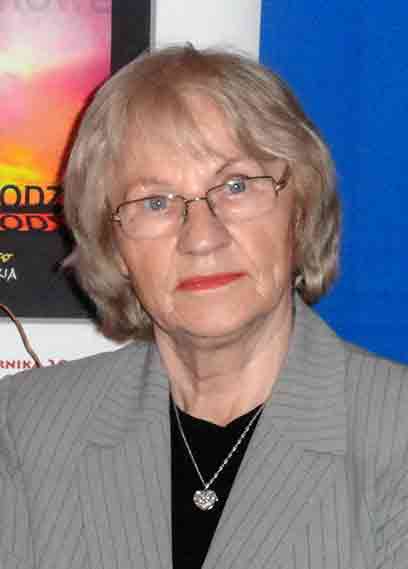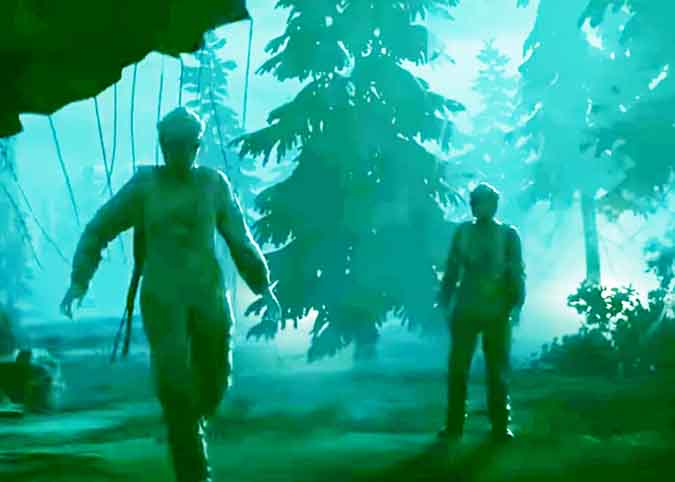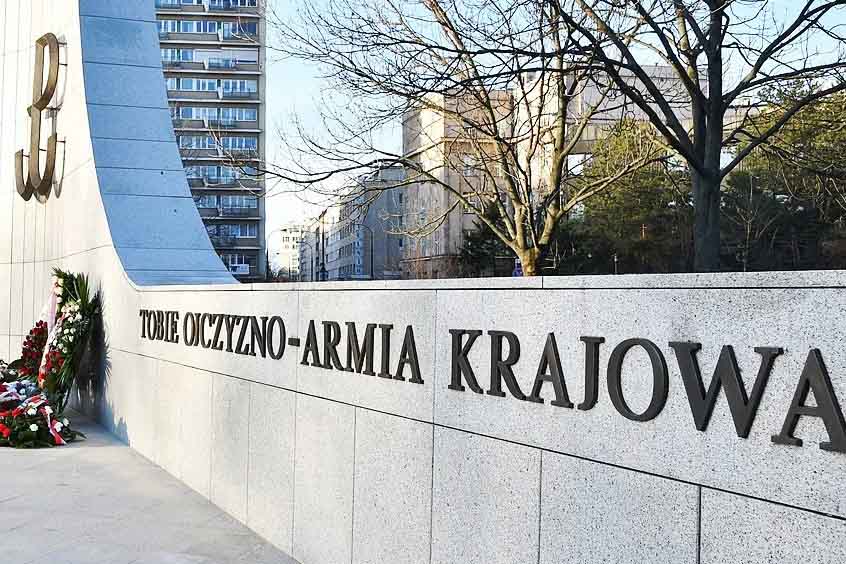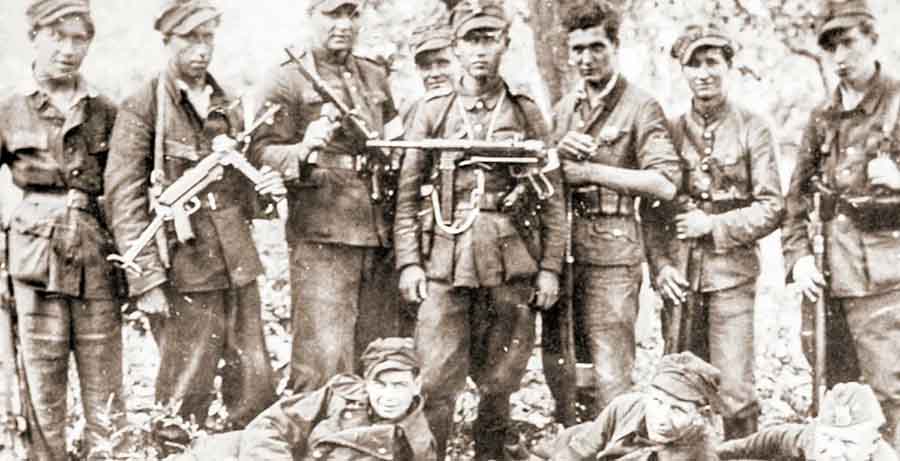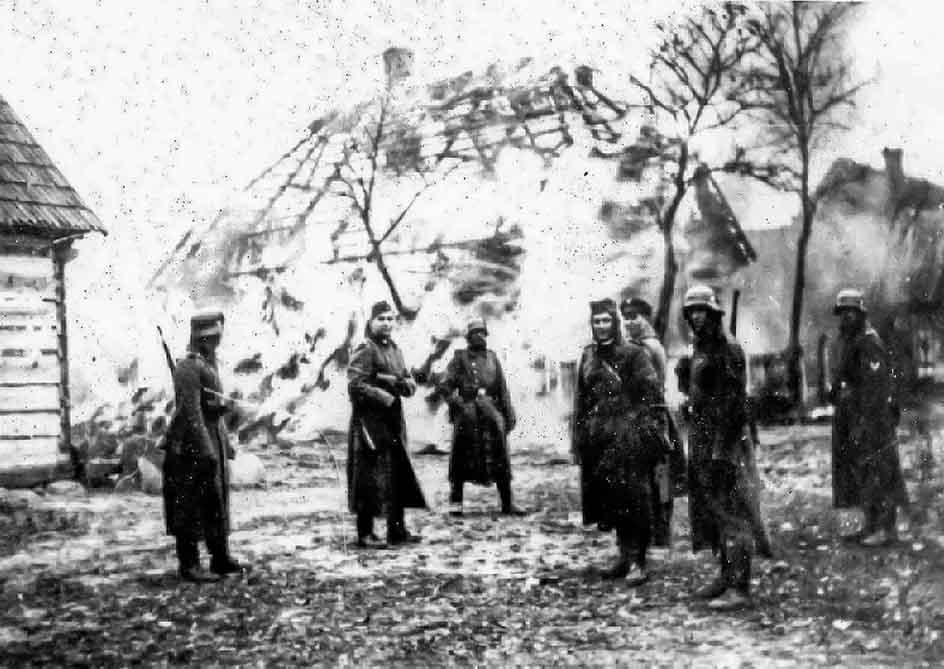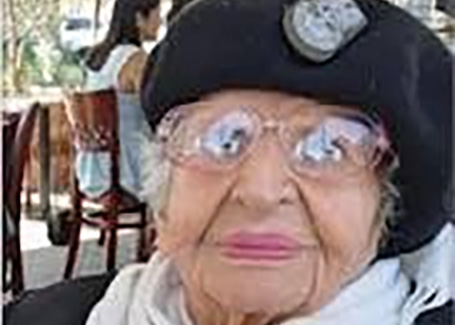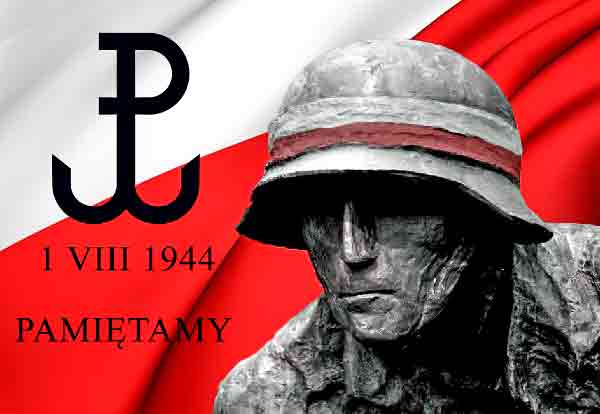On August 1, 2024, we will celebrate the 80th anniversary of the outbreak of the Warsaw Uprising. We will celebrate it for 63 days, because that is how long the uprising lasted. Each day was significant, marked by the heroism of soldiers — insurgents — "Warsaw children who went into battle for the capital..." and the martyrdom of the residents of the capital, brutally murdered by the occupiers. Begun with great enthusiasm, it was supposed to last a historical moment, a few days. After 63 days, it ended in a military disaster and, at the very least, a moral defeat.
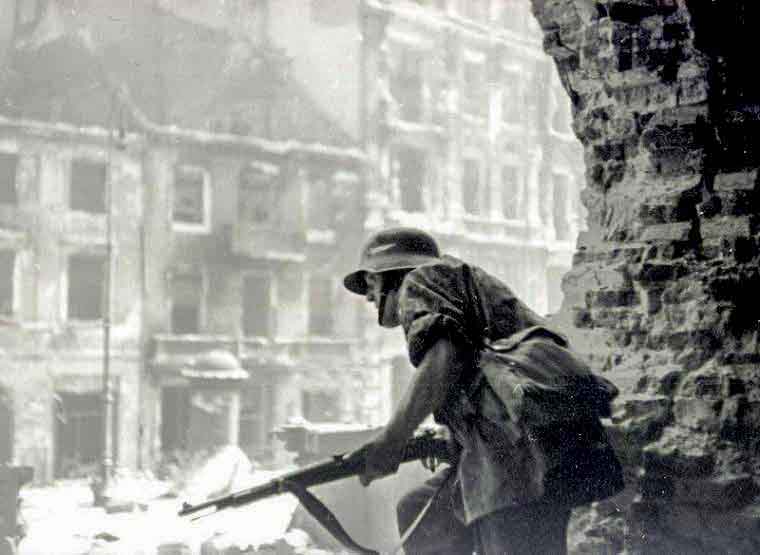
Insurgent lookout in the ruins of the Holy Cross Church on Krakowskie Przedmieście. (Source: Wikipedia)
Historians and politicians have already written thousands of pages of scientific papers analyzing this event, but from the perspective of 80 years and the current political and military alliances in the world, they will probably start new polemics over its assessment. There are very few witnesses to those days left. The young generation, due to various program reforms and lack of time for modern history lessons, is not sufficiently informed about those events. It will therefore be appropriate to recall the most important historical facts accompanying the Warsaw Uprising.
Divergence of goals between Polish and Allied leaders
The political situation in Poland in the interwar period and during World War II was extremely complicated. The saying "friends of our friends are our friends" in relation to Poles in the above-mentioned time was fundamentally false. Poles in the West were represented by the London Government and were allies of England and America. The Allies, on the other hand, were in an alliance with the Soviet Union. For Poles, this was a forced alliance. After all, they remembered September 17, 1939, the Katyn massacre, deportations to Siberia and the anti-Polish activities of the NKVD. The fundamental question for Polish patriots was: what would Poland be like after World War II?
The response was made at the conference of the Big Three (US President Franklin Delano Roosevelt, British Prime Minister Winston Churchill, and Soviet leader Joseph Stalin — November 28-December 1, 1943) in Tehran and later made more specific at the Yalta Conference (February 4-11, 1945).
In Tehran, in addition to several other important agreements, very important decisions were made, with significant consequences for the Poles:
- A new eastern border between Poland and the Soviet Union was established on the so-called Curzon Line.
- The European countries were divided into Allied operational zones — pursuant to inter-Allied agreements, Poland found itself in the Red Army's operational zone.
The conference's findings were hidden from the Poles.
Operation "STORM"
With the Eastern Front approaching the Polish borders from before September 17, 1939, the Home Army command, in agreement with the London Government, ordered Operation "BURZA" (Storm).
It was a military operation organized and undertaken by Home Army units against German troops in the final phase of the German occupation, immediately before the entry of the Red Army, conducted within the borders of the Second Polish Republic. It lasted from January 1944 to January 1945.
In this action, a total of about 100,000 soldiers were mobilized to support the Red Army in the fight against the Germans, but also to make the USSR authorities aware that the liberated territories were dominated by Poles and that the legal government representing them was the Polish Government in Exile.
The intentions and actions of the Soviet special services were definitely different, very far from Polish expectations. Home Army soldiers were arrested, disarmed, shot and deported deep into Russia by the NKVD. Local agreements between the Home Army and Soviet partisans were broken. Terror was used against the civilian population, disinformation and hostile propaganda were spread.

A plaque on the grave of a participant of the Uprising in a cemetery in Milwaukee, Wisconsin. (Photo: Marcin Murawski)
In total, as a result of the actions of the Soviet security services, mainly the NKVD, 50,000 AK soldiers participating in the "Burza" operation were imprisoned and interned in camps. The partial success of the "Burza" operation once again made Poles realize that they had two enemies — Germany and the Soviet Union.
The turning point in Polish-Soviet relations was the establishment by Moscow on 22 July 1944 of the Polish Committee of National Liberation (Polski Komitet Wyzwolenia Narodowego, PKWN), which acted as the Polish communist government subordinated to the Soviet Union.
The Home Army command planned to liberate the capital on its own before the Red Army entered, hoping that this would strengthen the international position of the Polish government in exile and stop Stalin's process of subordinating and sovietizing Poland.
The plans of civil and military authorities and the moods and personal motives of the population
The concept of a general uprising against the Germans had accompanied the Poles since the September defeat (1939). People only wondered when and under what conditions it would happen. It seemed that now such a moment had come. According to the statement of General Tadeusz "Bór" Komorowski in October 1943, "the uprising cannot fail".
Whether the uprising would (in the future) succeed was determined by several factors:
- Closely linked with Allied operations.
- Choosing the right moment.
- Obtaining external support (aircraft, supply of weapons and ammunition).
- Modern command.
- Coordination of activities,
Few of these points accompanied the decision to start the uprising. Opinions among representatives of the civil and military authorities were divergent.
The commander-in-chief, General Kazimierz Sosnkowski, was against the uprising. He believed that the uprising could only succeed in agreement with the USSR troops. Prime Minister Stanisław Mikołajczyk considered the uprising to be a bargaining chip in talks with the Soviets. The British government wanted to use a possible uprising in talks at the Allied conferences. Many misunderstandings and contradictory decisions accompanied the outbreak of the uprising – the so-called "W" hour.
The moods of the Warsaw population were different. The personal motives for participating in the uprising were varied, but many participants' accounts recurred with similar aspirations: above all, fulfilling their patriotic, soldierly duty and liberating the capital from the rule of the hated occupier. Colonel Kazimierz Iranek-Osmecki, head of Department II (information and intelligence) of the Home Army Headquarters, described the need to take part in the patriotic uprising as follows:
You had to live through five years of occupation in Warsaw to feel what the people and soldiers felt. You had to live day after day, hour after hour for five years in the shadow of the Pawiak prison, you had to watch your friends disappear one by one during those months, you had to feel your heart contract in your chest every time, you had to hear the sounds of salvos every day so much that you could no longer hear them, get used to them like church bells, you had to silently assist on a street corner on a sad winter evening or a bright spring morning at the execution of ten, twenty, fifty friends, brothers or strangers, taken at random from the crowd, herded against a wall, their mouths plastered shut and their eyes expressing despair or pride. You had to experience all of this to understand that Warsaw could not help but fight.
The outbreak of the uprising
By order of the commander of the Home Army, General Tadeusz "Bór" Komorowski, the Warsaw Uprising began on August 1, 1944 at 5:00 p.m., the so-called "W" hour. The uprising was aimed militarily against the Germans, and politically against the USSR and the Polish communists subordinated to it.
The Home Army and the authorities of the Polish Underground State intended to reveal themselves and act as the host before the Polish Committee of National Liberation (established in Lublin and dependent on Stalin's will), as the only legal authority of the independent Republic of Poland.
The uprising involved 50,000 soldiers. In addition to men, women (14 percent of the soldiers) and children also took part in the fighting. The youngest participant in the fighting, Jerzy Szulc, a.k.a. Tygrys, was 10 years old. Most of these young soldiers entered adulthood during the occupation.
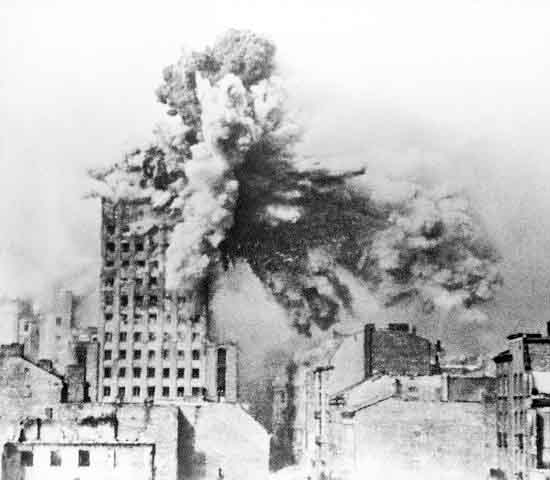
Prudential building hit by heavy mortar shell (August 28). (Source: Wikipedia)
The Home Army units, as well as members of other organizations subordinate to the Polish Underground State (National Armed Forces, People's Army) and volunteers from Berling's Army, Jews saved from the "Gęsiówka" camp, Allied air squadrons and representatives of over 20 different nationalities, ranging in number from several hundred to individual participants, took part in the fight.
The insurgents were actively supported by the civilian population, providing them with food, organizing facilities for the Home Army soldiers, taking part in caring for the wounded, building barricades and clearing the rubble of the city. Wanda Figiel, a liaison officer at the rank of senior sergeant during the uprising, recalled that the Warsaw Uprising "was an uprising that came from the heart, without coercion. […] You could see the community spirit". Many soldiers of the uprising and residents of Warsaw had similar feelings. The insurgents represented a full cross-section of Polish society. Workers and intellectuals, supporters of almost all political views, people of different ages, different origins and different religions stood shoulder to shoulder in the fight.
The weakest point of the insurgents was their weapons. On August 1, 1944, the soldiers had only 2,500 pistols, 1,475 rifles, 420 machine pistols, 94 light machine guns, 20 heavy machine guns. They also had weapons manufactured by the Home Army, such as: flamethrowers, incendiary bottles, "Błyskawice" pistols, grenades ("Sidolówka" and "Filipinki"). There was enough of everything to arm only a few thousand soldiers. Weapons and ammunition were captured from the enemy or received thanks to Allied airdrops. However, the insurgents remained defenseless against the bombings conducted by the Luftwaffe and the Wehrmacht artillery. One could say that someone who took on the sun with a hoe was better prepared than the participants of the Warsaw Uprising attacking the Germans. In practice, every tenth insurgent had a weapon. The rest "had to acquire a weapon" and they did it.
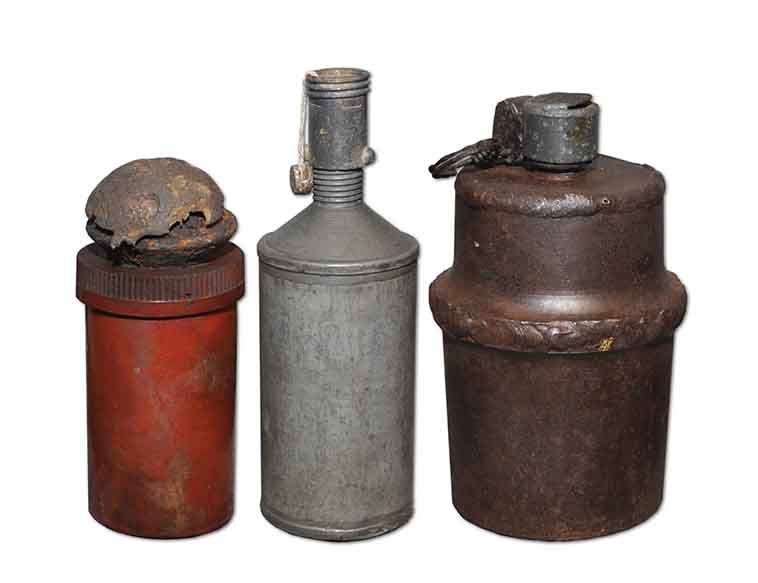
Hand grenades made by insurgents. From the left: Filipinka, Sidolówka and Karbidówka
The Germans used a total of about 50,000 soldiers against the insurgents at various times. A characteristic feature of the units suppressing the uprising was the large participation of collaborationist units, including Ukrainians. The German commanders were fourteen experienced officers with the rank of general.
From the very first months of the occupation, the Germans were developing a plan to suppress a possible Polish uprising. In the spring of 1944, the buildings of offices, institutions and military barracks were fortified. Communication arteries were secured. The insurgents were confronted by trained specialist regular army units with high-class modern equipment: rocket mortars, self-propelled, rail and siege guns, self-propelled "Goliath" mines, tanks and air support.
None of the five conditions for success outlined by Gen. "Bór" Komorowski could be realized. The Red Army was not interested in helping the insurgents. The West did not provide sufficient supplies and ammunition. The insurgents had little to oppose the cruelty of the German army, apart from enthusiasm and courage.
Was it worth it?
63 days of insurgent fighting ended in an unprecedented defeat. 16 to 18 thousand Home Army soldiers died, 20 thousand were wounded and 15 thousand were taken prisoner. As a result of air raids, artillery fire, difficult living conditions and massacres organized by German troops, 150 thousand to 200 thousand civilian residents of the capital died. 600 thousand were expelled from the city. As a result of the insurgent fighting and the systematic demolition of the city by the Germans, most of the buildings of the left-bank Warsaw were destroyed, including hundreds of priceless monuments and objects of great cultural and spiritual value.
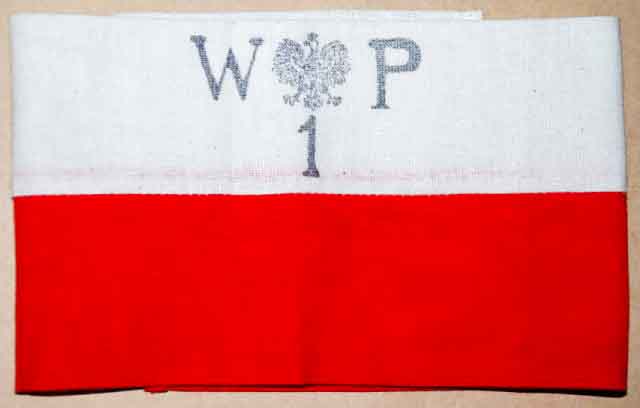
Insurgent armband (Source: Wikipedia)
While the uprising ended in defeat in military terms, it had enormous political significance. By starting it, the Poles demonstrated their desire to regain and maintain independence. As Jan Nowak-Jeziorański, a participant in this independence uprising and the legendary "courier from Warsaw", wrote after the war, "the fight was not in vain" and the Warsaw Uprising meant that "the Polish state, although enslaved and vassal, retained its distinctiveness, survived Stalin, who in his intentions probably wanted to make it part of Soviet Russia over time."
Today, after 80 years, for some, the Warsaw Uprising is one of the most important events in the recent history of Poland and its participants are heroes to whom we owe eternal memory. For others, due to its tragic consequences, in particular the enormous human and material losses, it did not make sense. Today, due to (in my opinion) false political correctness, trying to diminish the guilt of the Germans for the tragedy of World War II, the significance of the Warsaw Uprising is being denied. For all, the question of the justification of the decision to start the uprising remains the subject of debates and heated polemics.



